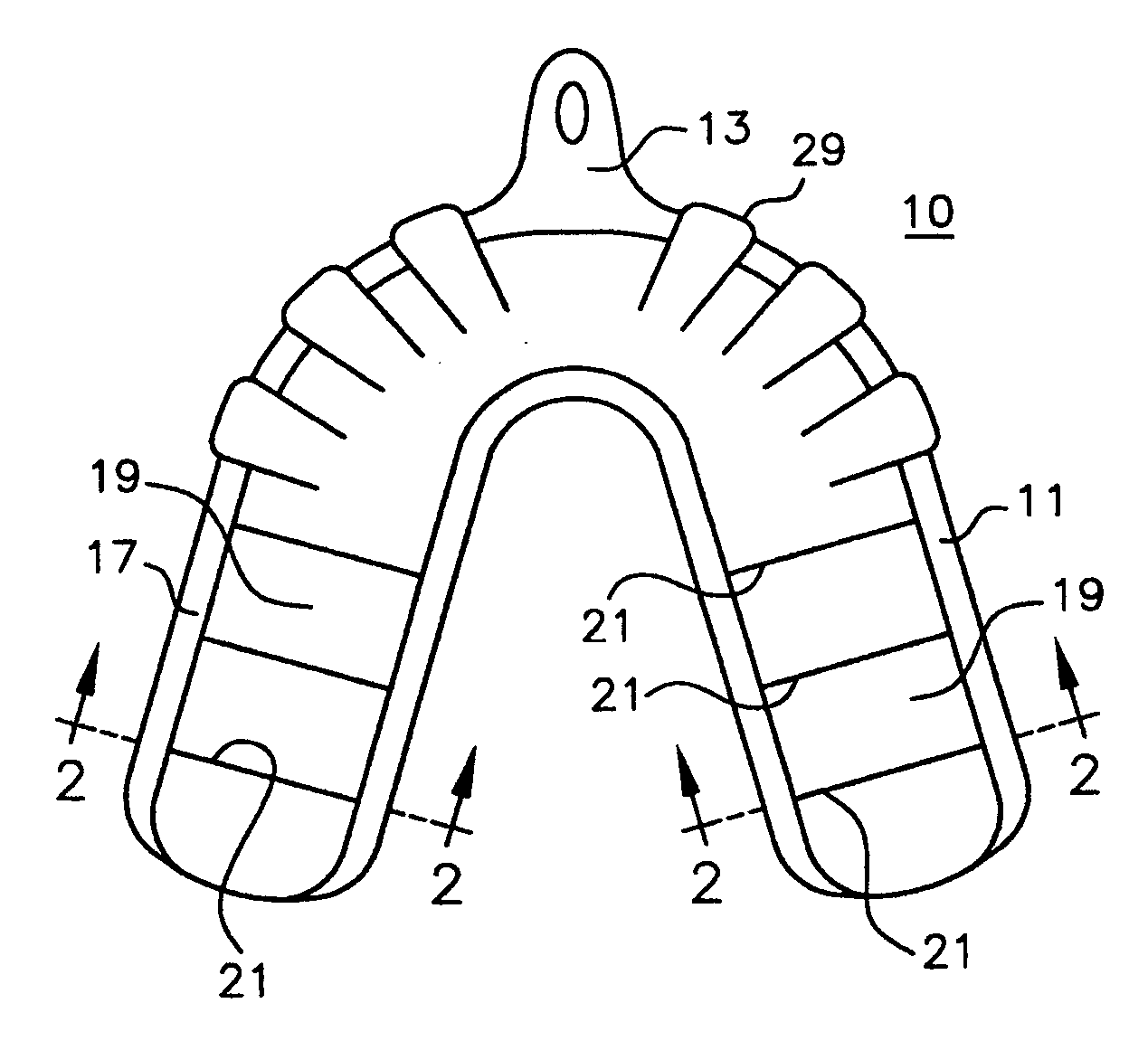Dual tray athletic mouthguard
a mouthguard and dual-trays technology, applied in the field of mouthpieces, can solve the problems of increasing production costs, increasing tongue and breathing interference, and discomfort for users, and achieve the effect of preventing injuries and reducing the possibility of concussion
- Summary
- Abstract
- Description
- Claims
- Application Information
AI Technical Summary
Benefits of technology
Problems solved by technology
Method used
Image
Examples
Embodiment Construction
[0016] As shown in the drawings, a mouthguard in accordance with the invention, generally shown as 10, includes a first or outer tray 11, shown from the bottom in FIG. 1. First tray 11 has a tab or lip 13 for attachment to a cord or string, not shown, that can be worn around the user's neck in the conventional manner. Tray 11 has an upward facing generally U-shape such that the middle 15 of the U-shape is aligned with the front teeth and the ends 17 of the U-shape are each aligned with the back teeth. The bottom portion 19 of tray 11 along the two ends 17 includes at least one interface, shown in the drawings as ridge 21 formed on each end of sufficient size to engage at least one cusp of a lower molar of the user. The interface may be a ridge as shown, or a groove that permits the cusps on the molar to be engaged as described below. The term “interface” is defined as any raised or lowered portion of the bottom 19 that allows the cusps of the molars to engage in a manner that preven...
PUM
 Login to View More
Login to View More Abstract
Description
Claims
Application Information
 Login to View More
Login to View More - R&D
- Intellectual Property
- Life Sciences
- Materials
- Tech Scout
- Unparalleled Data Quality
- Higher Quality Content
- 60% Fewer Hallucinations
Browse by: Latest US Patents, China's latest patents, Technical Efficacy Thesaurus, Application Domain, Technology Topic, Popular Technical Reports.
© 2025 PatSnap. All rights reserved.Legal|Privacy policy|Modern Slavery Act Transparency Statement|Sitemap|About US| Contact US: help@patsnap.com


